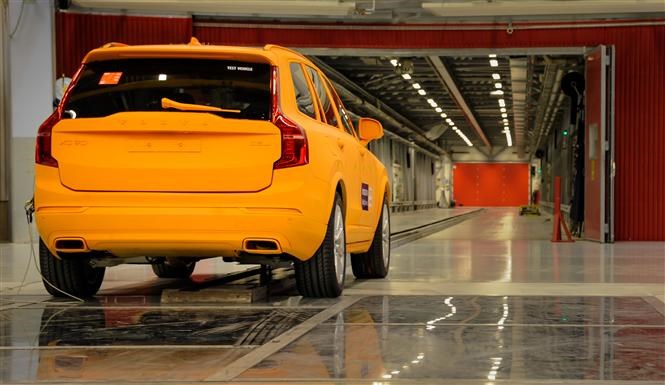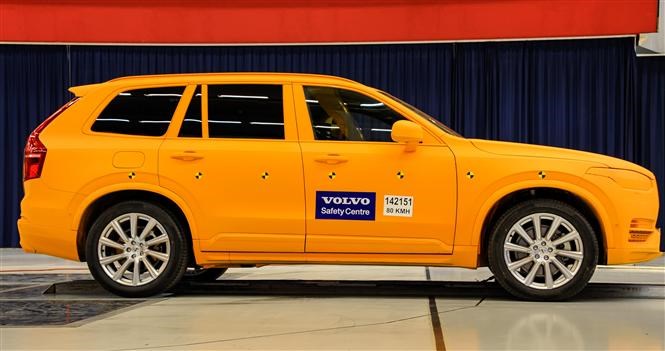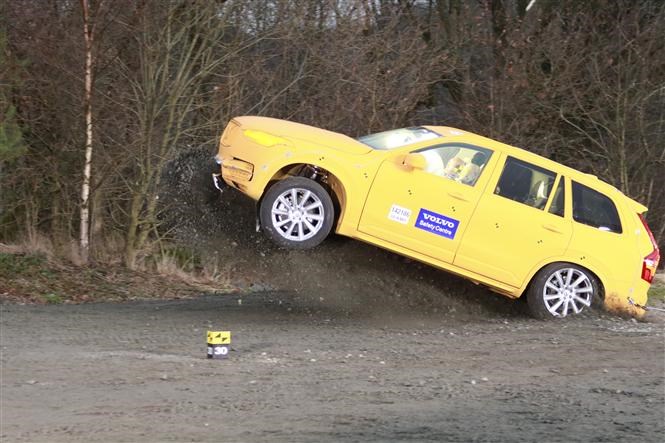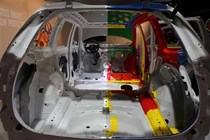The 1993 movie Demolition Man, starring Sylvester Stallone, showcased autonomous cars and something called Securefoam, for when humans took control and failed. Before an impact this quick-setting foam filled the cabin, cocooning occupants and preventing any injury.
Genius. But it was set in 2032, so you might expect such a technology to be some way off yet – and you’d be right. However Volvo, famous for safety over anything else (even its boxy estates) reckons it has an answer to that messy foam, even if it doesn’t believe in fully autonomous vehicles.
In fact it is proudly proclaiming, through its 2020 Insight program, that no one should be killed or seriously injured in one of its cars by the year 2020. That’s an impressive motto, and one not without limitation, but the firm is deadly serious about how successful it has to be.
Well-known for its passive safety, introducing the world to seat belts and laminated windscreen glass, its’ also forging forward in active safety. Last year the company pledged a major investment in AstaZero, the world’s only dedicated active safety centre in the world, conveniently located just a few kilometres away from its Gothenburg base.

Across a mixture of controlled rural, urban and highway-type roads the firm can run through an almost limitless mixture of scenarios designed to test safety systems and the potential accidents that can be avoided with them. There’s even 12 different engineered-in accident blackspots.
Systems such as active cruise control, pedestrian detection and auto-brake functions – items that can potentially be life-saving for a busy company car driver – can be tested to their limits. To maintain its chance of hitting its 2020 safety target, Volvo even uses the centre to improve its 12-tonne trucks.
Alongside the real-world data, harvested from every Swedish road traffic accident involving a Volvo vehicle, the firm continues to develop passive safety systems at its test centre in Torslanda, Gothenburg too.
And the model to really benefit from all of this combined safety testing and technology is the new XC90, a car that Volvo CEO Hakan Samuelson tells us is “a big milestone in our 2020 vision”. This seven-seat SUV, popular with family-orientated company car buyers is set to be one of the safest cars available. That’s not only good for insurance costs, and fleet costs, but good news for those who prioritise their family’s safety as well.

Over 30,000 computer simulations have been carried out on the new car, testing every possible scenario time and time again, while over 100 physical XC90 models have been crashed in the name of research. The firm is keen to point out, that while it carries out all of the legal standardised tests, its that real-world data that allows it to do more and test against more un-expected risks.
Such as lower spinal injuries, which is one of the more common results of an accident in a vehicle – especially if the car has left the road moments before impact. Always renowned for its comfortable seats, they’re now safer than ever before.
Sensors detect if the car leaves the beaten path and tighten the seat belts, straightening the occupant’s posture before any possible vertical loading is placed on the spine. The seats themselves have built in crumple zones, and the seat cushions have been specially developed to absorb any vertical forces.
And like any other car in the range the XC90 is available with a full suite of safety kit, including Blind Spot Information System (BLIS), lane keep assist, Forward collision warning, Citysafe pedestrian and cyclist protection, adaptive cruise control and a 360-degree camera.

Plus the XC90 adds two new systems to that tally, including a camera that detects a rear impact and tightens belts accordingly, plus an autobrake function which stops you turning into the path of oncoming traffic at a junction.
No one wants to have an accident, but if you’re going to have one then it looks like the new Volvo XC90 might just be the best place to be if you do. And at least this way you won’t have to fight your way out of the Securefoam.







